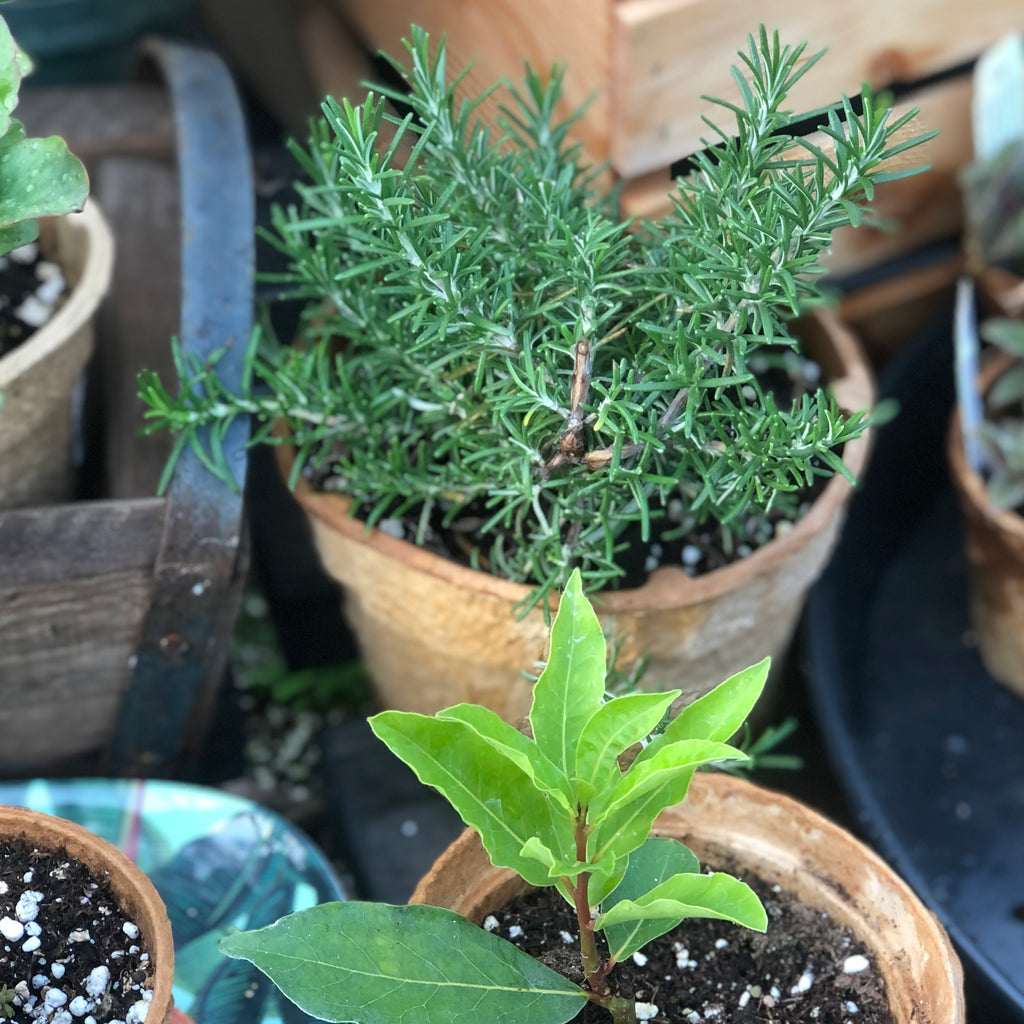One of the most popular topics that comes up each November is the question of growing herbs indoors for winter. As we have reviewed in the past, the best types of herbs to enjoy indoors are warmer-climate evergreen perennials, which includes selections such as rosemary, bay leaf, lemongrass, myrtle, some varieties of thyme, a few lavenders, and then more spice-like herbs such as galangal ginger. By contrast, It is very difficult to grow annuals like basil indoors unless starting fresh from seed and using grow lights.
If you like the idea of growing the warmer climate evergreen herbs indoors, you'll notice that many of them are Mediterranean, which gives us some clues as to what will help these plants perform well over winter.
First, most Mediterranean herbs grow in full sun and the Mediterranean climate features sunny days that are a little longer compared to what we have in Manitoba.
During the summer full sun is defined as 6 - 8 hours of direct light; indoors through winter full sun becomes more a question of providing the brightest location available. Daylight is inevitably shorter and less intense through winter, so do everything possible to maximize for these plants. The amount of light available for these plants will correlate directly with how they are productive over the winter.
The second thing that stands out about Mediterranean winters is that they are cool... not at all cold, but definitely cooler than summer. There is a distinct change of seasons and these plants anticipate as much. When growing Mediterranean herbs indoors it is ideal to find a location that is bright and comfortable during the day but also cools off once the sun goes down. For example, sunrooms, bay windows, older windows, foyers or locations near patio doors are often cooler than the rest of a cozy house and therefore ideal for winter herbs.

The last major environmental concern to consider is that the Mediterranean is ocean-bound and humid, while prairie homes through winter are not. This is probably the biggest challenge, in that dry forced-air heating is very hard on humidity-loving plants. Fortunately, there are some effective workarounds.
For one thing, if you can find that sunny but cooler location in your home it will go a long way towards buffering the impact of dry air. But I would still take a few extra steps. Start by placing your plants on pebble trays; that is, saucers that have stones on them so that the pot sits on the stones. Pebble trays create passive humidity as the warm air drys out the H2O trapped around the stones after watering, and definitely creates a micro-climate of humidity directly improving conditions for your herbs.
It also helps to group plants together, shower indoor herbs every so often and also re-direct forced air from heat vents away from your plants.
Outside of the above fundamental considerations, your indoors herbs will be easier to enjoy if you:
1) water deeply so that the whole root system becomes hydrated, but then allow to dry to the touch
2) grow all herbs in pots with drainage holes
3) apply an organic all-purpose fertilizer monthly right through winter
4) snip stem tips to promote new indoor growth; the main exception to this rule applies to young bay leaf plants which are very slow-growing and initially should be harvested by cutting half leaves (also, herbs like parsley or lemongrass that lake branching stems are harvested by giving them a good hair cut across the leaves)
Hope this little tutorial helps anyone who wants to enjoy the flavour and fragrance of herbs indoors this winter!







